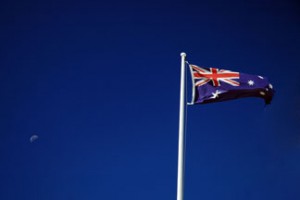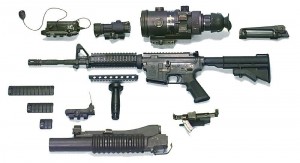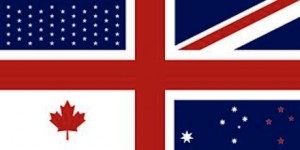 “Opportunities are available in all walks of life,” sang the Kinks, “in Australia” in their 1969 concept album Arthur. The song works a little better than that sounds; it was inspired by Ray Davies’s brother-in-law Arthur Anning, who did emigrate to Australia.
“Opportunities are available in all walks of life,” sang the Kinks, “in Australia” in their 1969 concept album Arthur. The song works a little better than that sounds; it was inspired by Ray Davies’s brother-in-law Arthur Anning, who did emigrate to Australia.
And the Australians are keen on some emigrants today. Like, for instance, special forces veterans.
US SF and the Australian SAS have always been close — closer than the Australian SOF and amphib shop is to its British forebears, who look down their noses a bit at the colonials.
This Australian Army page lists some of the openings they had for “Overseas Applicants” in the 2011-2012 recruitment cycle, which is past, but they certainly will have a 12-13 cycle as well. If you root around a bit in the page, you can find the naval and air forces openings as well. They’re looking for SOF officers and NCOs, among other skills.
So what do the Australians do? Among other things, they’ve been mixing it up in Afghanistan since very early in the war. This link takes you to a trailer for a very recent (November 2011) Australian TV documentary on YouTube. And this link lets you watch the whole documentary, a piece at a time. Weapons buffs will enjoy spotting the first-rate guns and optics in Australian SAS service (looks like they’re running H&K 416s and Elcans, and other top-shelf hardware). Everyone else will just be glad the Diggers are on our side.
You know, the US Army would benefit a lot fom a similar willingness to accept NCOs and officers from elsewhere in the Anglosphere. Imagine the cross-pollination that could get going. The Aussies have a Pacific orientation. The New Zealanders and Canadians are accustomed to doing more with less (but Canada does require French and English bilingualism for officers and NCOs, a high hurdle for most Yanks to jump). The Brits bring a certain Old World sensibility and their legendary dry humour to what would otherwise be a tawdry brawl.
 The SOF forces of the English-speaking nations already use interoperable weapons, communications and logistical equipment. In fact, most of the Coalition SOF who work with our people in Afghanistan are using the M4A1 carbine (or an equivalent, like the C8 or HK416), a version of the FN Minimi LMG, and other weapons that Americans know. The British have a niche in making some of the best communications and Electronic Warfare/intercept radios in the world.
The SOF forces of the English-speaking nations already use interoperable weapons, communications and logistical equipment. In fact, most of the Coalition SOF who work with our people in Afghanistan are using the M4A1 carbine (or an equivalent, like the C8 or HK416), a version of the FN Minimi LMG, and other weapons that Americans know. The British have a niche in making some of the best communications and Electronic Warfare/intercept radios in the world.
 In the military world, the Anglosphere is more than just a concept. For all intents and purposes, the security clearances of the five nations are interchangeable, and to a very great extent the SOF of the nations are interoperable in the field. If we ran this program internationally on a bigger scale, it would let the nation facing a threat or crisis plus-up while relieving nations enjoying peacetime conditions of some expenses. Win-win. And the SOF guys who moved from nation to nation would increase their skills in unimaginable ways. Win-win-win.
In the military world, the Anglosphere is more than just a concept. For all intents and purposes, the security clearances of the five nations are interchangeable, and to a very great extent the SOF of the nations are interoperable in the field. If we ran this program internationally on a bigger scale, it would let the nation facing a threat or crisis plus-up while relieving nations enjoying peacetime conditions of some expenses. Win-win. And the SOF guys who moved from nation to nation would increase their skills in unimaginable ways. Win-win-win.
However, the US military’s, and particularly the Army’s, personnel bureaucracy is entrenched, massive, and slow-moving, kind of like Jabba the Hutt without the grace and lightness of tread. Kalev Seoo calls it “PPPP,” Persistence of Peacetime Personnel Practices, and it’s one of the reasons we’re being beaten in Afghanistan.
But anyway, Australia is there for you. And the Pacific is going to get more interesting (in the ancient Chinese definition), particularly with the current US administration’s plans for de facto unilateral disarmament. The Aussies are going to have to step up.
Hat tip: Military.com, which appears to have missed that this was last year’s recruiting push.

Kevin was a former Special Forces weapons man (MOS 18B, before the 18 series, 11B with Skill Qualification Indicator of S). His focus was on weapons: their history, effects and employment. He started WeaponsMan.com in 2011 and operated it until he passed away in 2017. His work is being preserved here at the request of his family.
